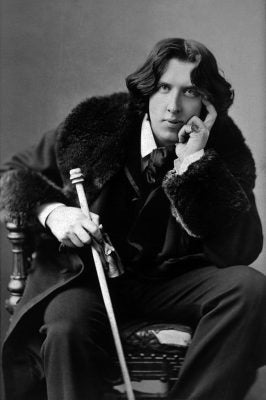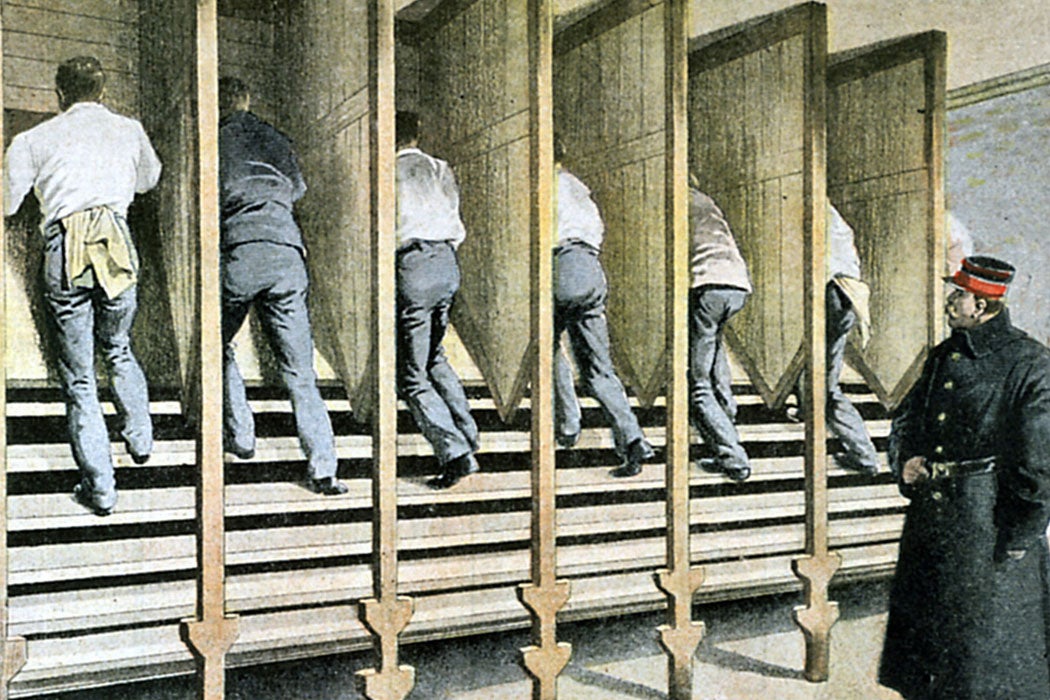If you are one of the 51.8 million people in the U.S. who use a treadmill for exercise, you know there’s much pain for your muscle-and-fitness gain. On your next 30-minute jog, as you count down the final seconds, ponder whether the hard work made you a better person. Consider whether the workout would feel different if you had powered something, even a fan to cool yourself off.
Two hundred years ago, the treadmill was invented in England as a prison rehabilitation device. It was meant to cause the incarcerated to suffer and learn from their sweat. It would mill a bit of corn or pump some water as a bonus.
Newsletter Signup
William Cubitt, a civil engineer raised in a family of millwrights, created the treadmill—which was also called a treadwheel in the early days—in 1818. Cubitt later became famous for overseeing the construction of The Crystal Palace in London in 1851, and was knighted by Queen Victoria for his efforts. Cubitt’s early attempts at the treadmill’s design took many forms, including two wheels you walked on whose cogs interlocked. But his most popular edition, which was installed at Brixton Prison in London, involved a wide wheel. Prisoners pressed down with their feet on steps embedded in the wheel, which moved it, presenting them with the next step. Picture it like the sport of log-rolling, only the log-like wheel was fixed in place. The Brixton treadmill was hooked up to subterranean machinery that ground corn. It wasn’t fun.
This treadmill could busy as many as 24 prisoners, standing side-by-side along the wheel. Some devices at other prisons were smaller, and most treadmills soon included partitions so convicts could not socialize. They slogged for 10 hours a day in summer, and a mere seven in winter.
The invention arrived at an apt time. At the end of the eighteenth century, the British began reforming their prisons. According to the historian U. R. Q. Henriques’ 1972 article “The Rise and Decline of the Separate System of Prison Discipline,” prisons previously offered their occupants next to nothing. Families had to bring in food and blankets, and the bribing of guards was rampant. As prisons began providing necessities, people worried that the poor would commit crimes just to get free stuff. Such luxuries needed to be offset by labor—ideally, labor that was painful and possibly even pointless.
Recruitment of the next generation of hardened criminals was rampant in prisons. Poor kids who came in for petty crimes would leave with contacts and lock-picking and other subversive skills. Prison administrators wanted both to rehabilitate and to keep people separate.

The partitioned treadmill delivered on both fronts. The long hours on it were mind-numbingly boring and physically exhausting. But it soon began to be used less as a work machine than as a torture device. “At first it was used to grind corn or pump water, or as a means of exercise. But it soon became a mere method of punishment, ‘grinding air,’” Henriques writes.
Since the treadmill ticked all the boxes, it rose in popularity. According to the historian David H. Shayt, by 1842, treadmills were being used in 109 of 200 jails across England, Wales, and Scotland. The likes of Oscar Wilde, imprisoned for gross indecency, worked the treadmill.
But, over time, the device’s purported ability to cure criminality through sweat—never mind the actual work output—was called into question. For instance, a short article called “Prison Electricity” in an 1882 edition of Scientific American called for a more productive approach to treadmilling. “The convicts hated it, and no useful results came of it,” the author writes. The suggestion was for “attaching dynamoelectric machines to the cranks” to “store electrically the energy developed.” It argued that prisons could sell energy, and thus pay for their own upkeep.
Meanwhile, treadmills were clearly not that safe. An 1885 British Medical Journal article called “Death on the Treadmill,” chastized Durham Prison for the treadmill-induced death of a prisoner with heart disease. Its overall high death rate—one fatality a week—prompted the conclusion that “[t]he ‘mill’ is not useful, and has proved itself occasionally injurious.”
More importantly among the minds of the day, the focus on breaking the body and mind was giving way to a more thoughtful approach to rehabilitation and to a focus on education. A series of prison acts passed throughout the 19th century increasingly restricted how long prisoners could be subjected to such devices, and the act of 1898 called for an end to their use. By 1895, there were just 39 in use across Britain, and merely 13 by 1901.
Inside of a century, the once-popular prison treadmill proved too cruel and pointless for its home nation, but that did not stop it from being imported to the U.S. The treadmill came to America in 1822, and was set up in four different prisons. It was briefly popular at the prison on East 26th Street in New York City. The first one installed there, which cost $3,050.99 to build, busied 16 prisoners at a time, who ground 40-60 bushels of corn a day. Within two years, the prison had built three more, two of them used by women. But, by 1827, the mills had fallen into only sporadic use and then were abandoned when the prison relocated. In Newgate, Charleston, and Philadelphia, treadmills were installed, used sparingly, and given up on in short order.
Just as in Britain, Americans were struggling with what to do with their criminals. Should they work alone, contemplating their former bad ways? If they worked while in prison, what was the purpose?
In America, it seemed, the answer could not be “toil for its own sake.” In 1827, the Prison Discipline Society of Boston wrote that “the treadmill… teaches the convict nothing that can be useful to him on his discharge. It is not a profitable employment of human power.”
At a prison opened in 1822 in Auburn, NY, a new approach emerged. Dubbed “collective industry,” prisoners sat together and worked, turning the prison into a factory, albeit a strict one. “The rules typically called for downcast eyes, lockstep marching, no talking, and constant work when outside the cells. The usual punishment for infractions was the lash.” This new system was considered both humane and, most importantly, highly industrious. Outside the prison walls, there was a labor shortage. Instead of milling a few dozen bushels of corn a day— work that an animal could do—these convicts were making shoes, clothing, hardware, furniture, rifles, and clocks. Private manufacturers brought raw materials or unfinished products into the prison and paid for the labor.
The idea soon spread, and prisoners all over the country were put to work—until concerns about prisons interfering with the open market surfaced, that is. Prevailing ideas about incarceration, work, and punishment continued to evolve, but the treadmill was long gone.
It resurfaced in 1913 with a U.S. patent for a “training-machine.” In the 1960s, the American mechanical engineer William Staub created a home fitness machine called the PaceMaster 600. He began manufacturing home treadmills in New Jersey. (He used it often himself, right up until the months before his death at the age of 96.)
Now, it’s the top selling piece of exercise equipment in the U.S. It’s evolved, of course, as has America, and the two fit each other quite nicely. Today’s treadmill lets people run or walk even in inclement weather, at home or at the gym. It’s a painful, boring, and sometimes cruel device: People still do get injured and even die on treadmills. But we still climb on, by choice, letting our other devices amuse us while we sweat.







